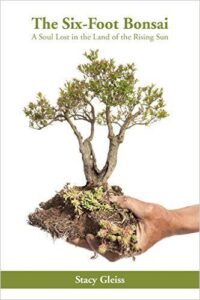
I’ve ran into people who show the same obsessive interest Gleiss writes about in her book. In fact, those people drove me to start JP in the first place. I wanted to speak out against misplaced views about Japanese culture. Through my research, I’ve come to admire some aspects of the culture and dislike other aspects. To my neighbors, I’ve become something of a Japanophile, but my first interest was the Roman Empire (particularly the founding and collapse of Rome) and early Christian history. I own more books on those topics than on Japan, which is saying something. So in many regards, I struggle to understand the extreme love for Japan Gleiss writes about and otaku share. I find Japan fascinating but no more fascinating than the Roman Empire. I tell you this so you can understand that I am lack first-hand experience in culture obsession. Gleiss’s book serves as a better source. If you are obsessed with Japan (that is, it dominates your thinking and how you behave), you need to read her book.
With these caveats out of the way, let’s start with my impressions of the book and then lead into cultural obsession and kawaii culture. While I practice Zen, I stand in the Judaeo-Christian tradition. It’s through these lens that I view everything. I grew up in a particularly hardcore legalistic branch of Christianity, and its precepts are still written on my bones, despite knowing how wrong many of them are. Much of what Gleiss accounts with her life troubled my sensibilities. I also struggled to understand how her all-consuming interest in Japan could drive her to drop everything and transplant into the culture. I have an interest in living in Japan as well, but it would be as a Westerner who is respectful of Japanese practices and with an interest to study their history and folklore rather than trying to become Japanese. The West can learn many lessons from Japanese culture, but in the end, a person born and raised in the West can only adopt another culture so far. Cultures can only be judged in relation to each other, and the person considering the culture needs to have a broad and firm frame of reference. For example, I’ve studied Japanese culture, Persian/Babylonian culture, Hellenistic culture, Roman culture, ancient Hebrew culture, ancient Egyptian culture, and I grew up in rural American Judaeo-Christian culture. Gleiss writes about the importance of cultural comparison as a means to keep perspective:
When I first experienced Japan, I thought this intriguing culture held the secrets to a good life: order, process, and an almost artistic approach to everything. But my blind faith in this culture was sorely misplaced. In fact, placing trust in any culture is risky without a set of standards by which to measure the moral rectitude of any given custom.
In my case, my Judaeo-Christian background with a traditional rural American upbringing serves as my set of standards (with added standards from cultures I’ve studied). In many cases, I’ve observed my otaku friends pursue an interest in Japanese culture as a way to rebel against American individualism. While American individualism is toxic in its present rendition, turning toward a mistaken idea of Japanese culture can be more poisonous because the idea isn’t complete. Rather, it is an idealization. Now, idealizing a culture can be useful. My childhood idealization of the Roman Empire drove me to learn more, including the darker side of Rome–slavery, rape, disease, incest. However, for many, the echo-chamber of the internet prevents them from going past the sections of a culture they enjoy: otaku culture in particular.
Speaking of dark aspects of culture, as Gleiss’s book illustrates, Japan has a problem with objectifying young girls. American culture worships the idol of youth, but Japan takes it to the extreme. Long time readers know that I loathe fan-service. I’ve also explained the origins of lolita culture and kawaii culture. In Gleiss’s life, she explains how lolita and kawaii culture shaped her abusive ex-husband’s views of sexuality and women. The access to prepubescent sexualized media–the upskirt shots and other sexual poses manga and anime peddle–encouraged his pedophile tendencies. Buddhism and Christianity warn that the messages we consume shape our thinking. Consuming prepubescent sexualized manga–okay, let’s not dodge the word anymore: child pornography–will shape a person’s view of sexuality.
Child Pornography in Japan
Back in the 1990s, Japan’s child pornography industry flourished. In 1997, Christian Science Monitor wrote:
The child pornography that Japanese officials consider legal falls into two categories. The first features pictures of children in public places photographed with hidden cameras or powerful lenses. This “peeping” material does involve Japanese children, but is not considered a violation of the child-welfare law since the photographers are not “inducing” children to practice “obscene acts,” which the law prohibits.
A second type presents posed pictures of children, very often naked. Most of the children involved are girls from Southeast Asia and, to a lesser extent, Eastern Europe, according to three men who work in the pornography industry. In keeping with the industry’s self-imposed guidelines for pornography involving children under 18, no genitals or sexual activity is shown.
Part of the reason why it flourished in the 1990s was because of obscenity laws that banned displays of pubic hair, creating a loophole for images of prepubescent children. In 2015, the Japanese government banned the private ownership of obscene products involving both male and female children under the age of 18, but the law did little to curb the distribution of such material (Osaki, 2015). I’m sure you’ve seen anime or read manga that featured far-too-young children depicted in voyeuristic poses. These types of poses are so common to the media that they have become expected tropes. Adult women are shown flashing their assets along with teens and pre-teens in mainstream titles. Just look at No-Game; No-Life as one example. Dance in the Vampire Bund is another title that thinly veils this problem by stating that Mina Țepeș is far older than she looks and has an adult form. But that doesn’t stop the anime from objectifying her prepubescent body.
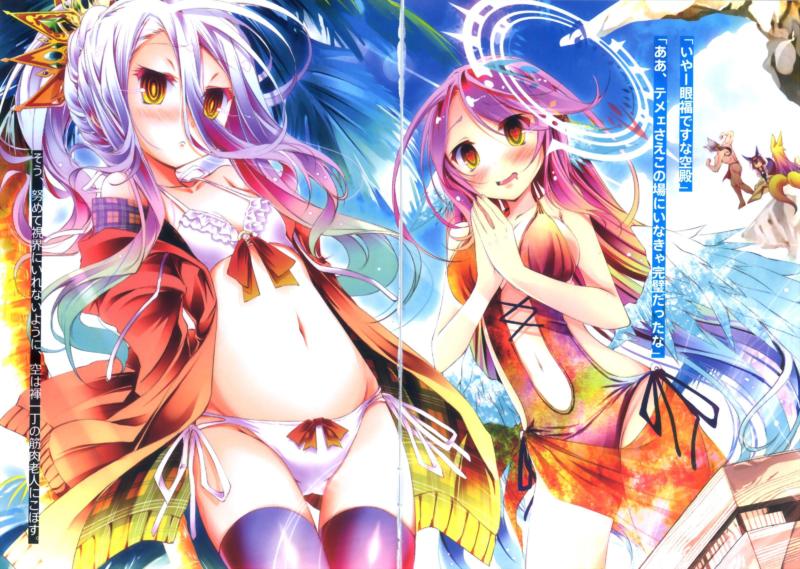
These types of fan-service are so common that few think much of it. Rei Ayanami, from Neon Genesis Evangelion, is perhaps one of the most fetishized characters. She’s 14, well below the allowable age to have sex according to Japan’s Children Welfare Act (which forbids sex for anyone under the age of 18) but above the age of consent established in the Japanese Penal Code (which is only 13). As you can see, even the law is ambiguous. In the United States, she still falls under child pornography laws, however. In any case, Rei and other characters have become so fetishized that it’s considered a normal part of being an anime/manga fan. Some fans even claim her as a waifu. In fact, relationships with fictitious teen and prepubescent characters are fairly common in the otaku fandom. The confusion surrounding the enforcement of obscenity laws (and how they clash with free expression) contribute to this normalization.
One of the issues surrounding enforcement of Japan’s obscenity laws deals with kawaii culture. Characters may be 20, but look 15. Lobbyists for the Japan Cartoonist Association resist an outright ban on the content (Ripley, 2014):
Ken Akamatsu, who lobbies lawmakers on behalf of the Japan Cartoonists Association, said a total ban on explicit content would damage the entire industry, making creators too scared to put pen to paper in case they risked breaking the rules.
He said the characters were imaginary, so unlike real child porn, no one was hurt.
“Actual children suffering and crying is not acceptable. But manga doesn’t involve actual children. So there are no actual victims,” he said.
Gleiss’s ex-husband echoes this reasoning. In the book, she accounts how her ex-husband claimed to separate reality from fantasy. Many people claim fiction doesn’t affect behavior; however, for most of human history fiction–myths and folklore–taught morals, values, and cultural viewpoints. While some claim fiction lacks victims, the victims are the readers. Their consumption distorts their idea of reality. It does it gradually, in ways that evade notice. In turn, this can shape sexuality and make it difficult to bond with people on an intimate level. Yes, some claim to be unaffected and have happy and healthy relationships. As with everything, fictional relationships and interests can benefit people and their relationships. Obsessive behavior falls outside of these possible benefits.
Incest in Japanese Culture
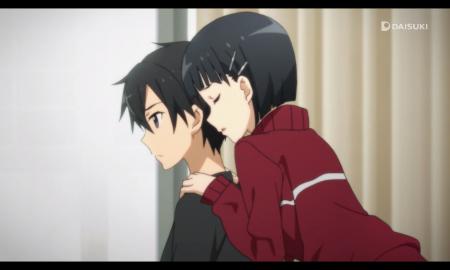
Related to child pornography is Japan’s long history of incest. Shinto mythology features incestuous relationships between deities. A region of Honshu has special terms for different types of incest:
- hiemaki refers to mother-in-law/son-in-law
- awamaki for father-in-law/daughter-in-law
- imonoko for father daughter.
This suggests these types of incest were common enough to warrant naming (Kitahara, 1989a). Shinto rituals that purified sins also named forms of incest. This further suggestions a commonality. According to Kitahara (1989a), the practice of co-sleeping and co-bathing may have contributed to historical cases of incest. Kitahara (1989b) examines a book outlining cases of mother-son incest where the mother helps relieve her son’s stress by helping him masturbate or even having sex with him. Kitahara (1989b) writes:
According to a 20-year-old male, when he was 14 and bathing with is mother, he inadvertently experienced erection. The other said: “It is better to discharge it,” and she petted him to ejaculate. They were having coitus since he was 16. Apparently some mothers behave similarly toward their sons, who typically express their reactions by saying “mother helped me to ejaculate” and this usually takes place in the bathroom.
Francis Pike confirms this was a lingering problem in 1997’s article in London magazine The Spectator.
In her book, Gleiss makes no mention of such happening with her ex-husband; however, the awareness of incest through literature and, perhaps through rare events as Kitahara examines, creates a framework that allows him to normalize such behavior. Manga and anime contributes to this as well. Brother-sister relationships have become rather common in recent years. No Game; No Life serves as an example, as does Sword Art Online. All of this points to an undercurrent of incest in Japanese cultural history. Over the last few decades, as Japanese birthrates decrease, researchers have pointed to how men have a mother complex. Back in 1993, Satoru Saito doubted mother-son incest was common, but the relationship between mother and son still defined Japanese society (Mccarthy, 1993):
‘There is no clear distinction between male-female relations and mother- son relations,’ says Dr. Saito. ‘Japanese males are always mixing these two: they want to assert their sexuality, but at the same time they want to be held by their mothers – warm, safe, secure.’
Today, as you can see in this article about dating, people still struggle with this issue. It results in unequal sharing of household work and general inequality in marriage. Again, this ties back into child pornography. Men from households with extreme nurturing–regardless of the sexual elements involved or not involved–struggle to develop adult viewpoints, so it would only be natural for them to develop affection for cute, innocent, and available portrayals of girls and women as media culture pushes.
Obsession and Fault Blinders

Cultural obsessions blind people to the culture’s faults, such as Japan’s child pornography and, to a lesser extent, incest. Gleiss’s book shows how a personal obsession can do this, but obsession can also blind a fandom. The normalization of fan-service and soft incest within anime and manga attest to this fact. Sadly, anime with such content sells. Some people argue that fan-service and lolicon are protected under free speech. While this is true, they shouldn’t be normalized. There’s a difference between protecting and normalizing certain types of expression. Yes, such expressions can be useful; they can raise awareness of the problem and–I’m going to stretch here–provide an outlet for people. But consumption of such messages affects how reality is understood. This is why you see some otaku encroach on women.
So far I’ve singled out men, but women suffer from the same issues. However, society places less focus on these issues. There is a double standard when it comes to unwanted sexual advances toward men. A female otaku grabbing a man at a convention doesn’t face the same backlash as a man doing the same to her. But setting that aside, I focused on men because most anime/manga objectify women more often than men. As a male, I expect my fellow men to behave as gentlemen. Check out the blog Art of Manliness if you want to see what I mean.
Gleiss’s book The Six-Foot Bonsai brings up all of these issues and speaks about Japan’s focus on youthfulness and cuteness in the context of her own life. Her book serves as a warning for those who are obsessed with Japanese culture and unable to see the culture’s negatives, and every culture has its darker side.
Now there are some who are obsessed with anime and manga but have little interest in Japanese culture. They just like the stories and the characters. However, obsession of any sort is an issue. Obsessions lack balance and leave a person with a one-dimensional life. You might know of a religious person who does nothing but speak about God and Jesus or Allah. In many cases, these obsessions are based on misconceived ideas and a lack of true understanding about the target of the obsession. They are obsessed with the idea rather than the reality, often in order to escape reality. Eventually, reality will prick the bubble and the shock of it will leave people unable to function. Gleiss suggests she struggled with this problem when her bubble finally burst.
The Long and Short
I want anime and manga to stop with the fan-service and ecchi and soft incest. I want them to focus less on tropes and more on good writing, and anime can do that. Animations have the ability to tell stories live action cannot. But I’m not naive. This will continue until Western and Japanese fans pressure the companies by not purchasing such content. It’s past time for anime and manga to stop with prepubescent sexualization.
Don’t get me wrong. I don’t have any issues with adult nudity. I used to draw and paint classical nudes back when I studied animation and art in college. The difference is intent. Classical art nudes seek to show the beauty of the human body or tell a story about the person. Sexual poses as we see in anime and throughout online art websites intend to arouse. They are not art because they don’t tell a story. Even child nudity can be used to drive home a point, such as the famous photo of 9-year-old Phan Thi Kim Phuc as she tried to run away from the napalm that burned her during the Vietnam War. But sexualization is a different matter entirely.
If you are obsessed with Japan and/or anime and manga or even video games, you need to reevaluate how it influences your life. Is is a way to escape something that troubles you? In small amounts this is okay, but if there is a problem you need to face it and make corrections if you can. If you can’t you should learn to accept the way reality is rather than avoid it. Everything ends, so even what seems forever will change.
Develop different interests. If you are an extreme otaku, develop interests apart from anime and manga. Take up a creative hobby aside from drawing your favorite characters or writing about them. Diversify.
If you are like Gleiss, you may have to abstain from Japanese culture altogether. She writes about using Japanese culture like it’s a drug. It’s okay to be interested in another culture. It’s different if you are consumed by it. Throughout Gleiss’s book, she writes candidly about this consuming influence, which is why I recommend you read her memoir if you too suffer from cultural addiction.
References
Barr, C. W. (1997, April 2). Why Japan plays host to world’s largest child pornography… (Cover story). Christian Science Monitor. p. 1.
Kitahara, Michio (1989a). “Childhood in Japanese Culture”. The Journal of psychohistory (0145-3378), 17 (1), p. 43.
Kiatahara, Michio (1989b). “Incest- Japanese Style.” The Journal of psychohistory. 16 (4), p. 445.
McCarthy, Terry (1993) Out of Japan: Mother love puts a nation in the puch. Independent. http://www.independent.co.uk/news/world/out-of-japan-mother-love-puts-a-nation-in-the-pouch-1508595.html
Osaki, Tomohiro (2015, October 22). Groups Criticize Japan’s Tolerance of Child Pornography, Call for Stricter Laws. The Japan Times.
Pike, Francis (1997). Where Some Sons Do Have Them. The Spectator. 20.
Ripley, Will and Hilary Whiteman. (2014). Sexually explicit Japan manga evades new laws on child pornography. CNN Wire.
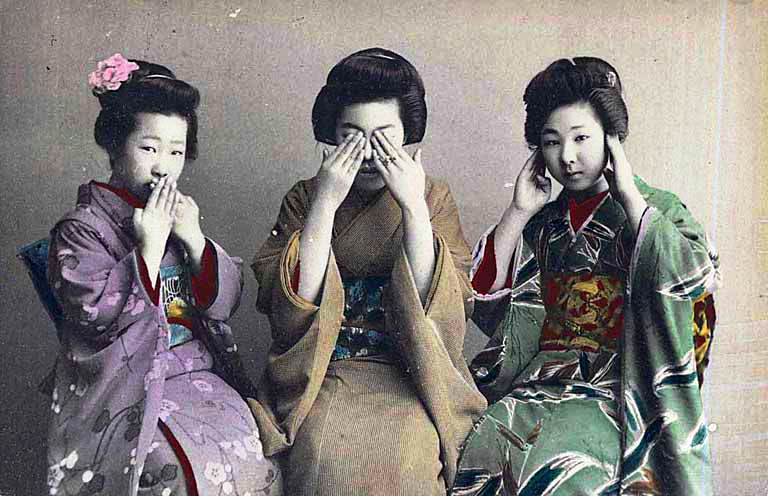


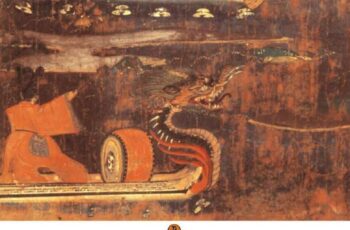
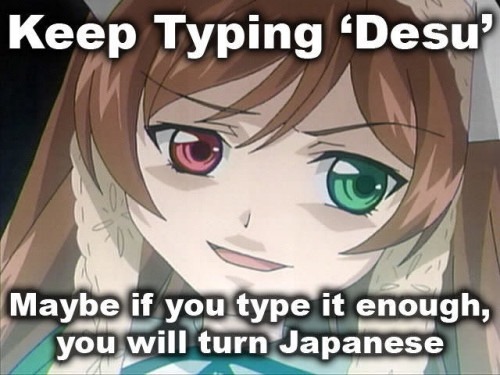

I thought the stories of mothers relieving the sexual tension of sons studying for exams had been shown to be mostly fantasies written by guys trying to see their writing in print. Even Anne Allison the Duke University anthropologist who did much to spread this idea to the Anglophone world seems to have backtracked.
As for the sexualization of underage girls (and boys who are usually not mentioned in indignant writing by foreigners), I find it hard to imagine anything worse than the child beauty pageants in the US, those pageants that gained notoriety with the murder of JonBenét Ramsey. They are seriously creepy in my view.
Moreover, while Japan may be a source of drawings that non-Japanese find questionable, it is the Ukraine and Russia that are associated with dubious photos of real children.
I have two boys in ordinary Japanese public schools (middle and high school). Compared to mine own early 60s US experience, the Japanese situation is almost monastic.
The sources I found didn’t consider such events widespread. I didn’t mean to imply they were. At the least, the accounts show some element of fantasy in the people Kitahara had researched.
I agree. Child pageants are troubling. When I wrote the article, I didn’t consider them.
American culture remains highly sexual. I’ve often wrote about this problem here on JP.
When I read Gleiss’s book, cultural obsession troubled me more than the later accounts of incest (although those troubled me too). Cultural obsession is a problem in the anime community.
It was a good article, I don’t agree with a lot of it, but I could understand where you come from.
I can’t represent anyone but myself here, but I do have soft-spot for incest-themed manga or anime. And I do enjoy watching a good loli (child-like) character from time to time. But I do think you have been focusing too sorely on the sexualising aspect on both, which understandable, however it does make your argument a lot more shallow.
For example, so far in 2017. Two of the most popular “loli” characters have been Kanna from Kobayashi Maid Dragon anime. And Tanya from Tanya the Evil anime. I think it is the two very good examples for you to test your own arguments on. Are they sexualised? If not then why lots of audiences like them? Would it make a different to the theme of the story if their character was of adult?
On incest, My complaint is not so much on the argument, but on the conclusion. Once again, only represent my point of view here. But normalising incest story would be the death of incest, because its draw has always been the taboo aspect of it. If marriage between Montague and Capulet was ordinary thing to do, then Romeo and Juliet would has been a pretty crappy story. If incest was normalised, then an incest story for me would be a pretty crappy one to read. Like most story, you want a protagonist to surpass an insurmountable struggle that ordinary people can’t do. Whether it’s the love between human, werewolf and vampire, or a pair of siblings. Seeing how it could be resolved is always the intriguing part.
And finally, it’s slightly ironic but one of the example you used above, No Game No Life actually has pretty good plot and good writing. There is no doubt that all of the fan-services and sexualising aspects of it is very distracting and disturbing some time. But audiences like me tend to think it is the necessary evil in the manga and anime industries (whether it’s right or wrong so). You need obssessive fans to burden the costs of overpriced DVD, goods, figures to keep it free on normal TV, or to keep the dying breed of novel (which that anime originally from) writing going.
That is my POV from the opposite side
Thanks for bringing a different view to the conversation.
I rather enjoyed No Game No Life despite how I speak about the incestuous elements. I agree, the writing was good. I also enjoyed Kobayashi Maid Dragon. The taboo on incest exists in most cultures because it creates genetic abnormalities and higher rates of birth defects. Ruling families that practiced it, such as the Pharaohs of ancient Egypt, struggled with the lasting effects. That said, I agree with you when it comes to story. Without obstacles and tension, you don’t have a story.
I have seen sexualized fan-art of Kanna and Tanya. While this doesn’t reflect the fandom as a whole, it shows how a section of it objectifies such characters regardless how how they are shown within the canon.
I focused on the sexual elements because they cause an issue among many people (I often have to address these as a librarian). Characters who aren’t sexualized within a story, such as Kanna, don’t cause a stir. I didn’t intend to say all loli characters are sexualized–they aren’t, or state all fans of such are deviants–they aren’t.
Cheers, thank you for clearing a few things up.
Stumble to your blog by chance and do enjoy the way you mix anime and manga analysis with the cultural aspect. Please keep up the good work!!
You write so wonderfully. I’ve wanted to read a blog like yours for years – someone who addresses such issues in a clear voice and with examples. Your tone is also brilliant. I love the way you write and I look forward to all that you post.
I’m fascinated by Japanese culture and history, but so much of it also frustrates me – particularly its large gender inequality, idol/youth-obsession, rape culture and child pornography. The Western world has these issues too, but in some ways, I feel much luckier.
I look forward to discovering more on your blog. Thanks for writing.
Thank you for your kind compliments. They made me blush a little with embarrassment.
Japanese culture amplifies the problems the West has and faces them sooner. Some problems are embedded in their history, but to be fair US culture has its own historical problems. East and West still have much to learn from each other. We just need to be careful not to idolize and idealize Japan.